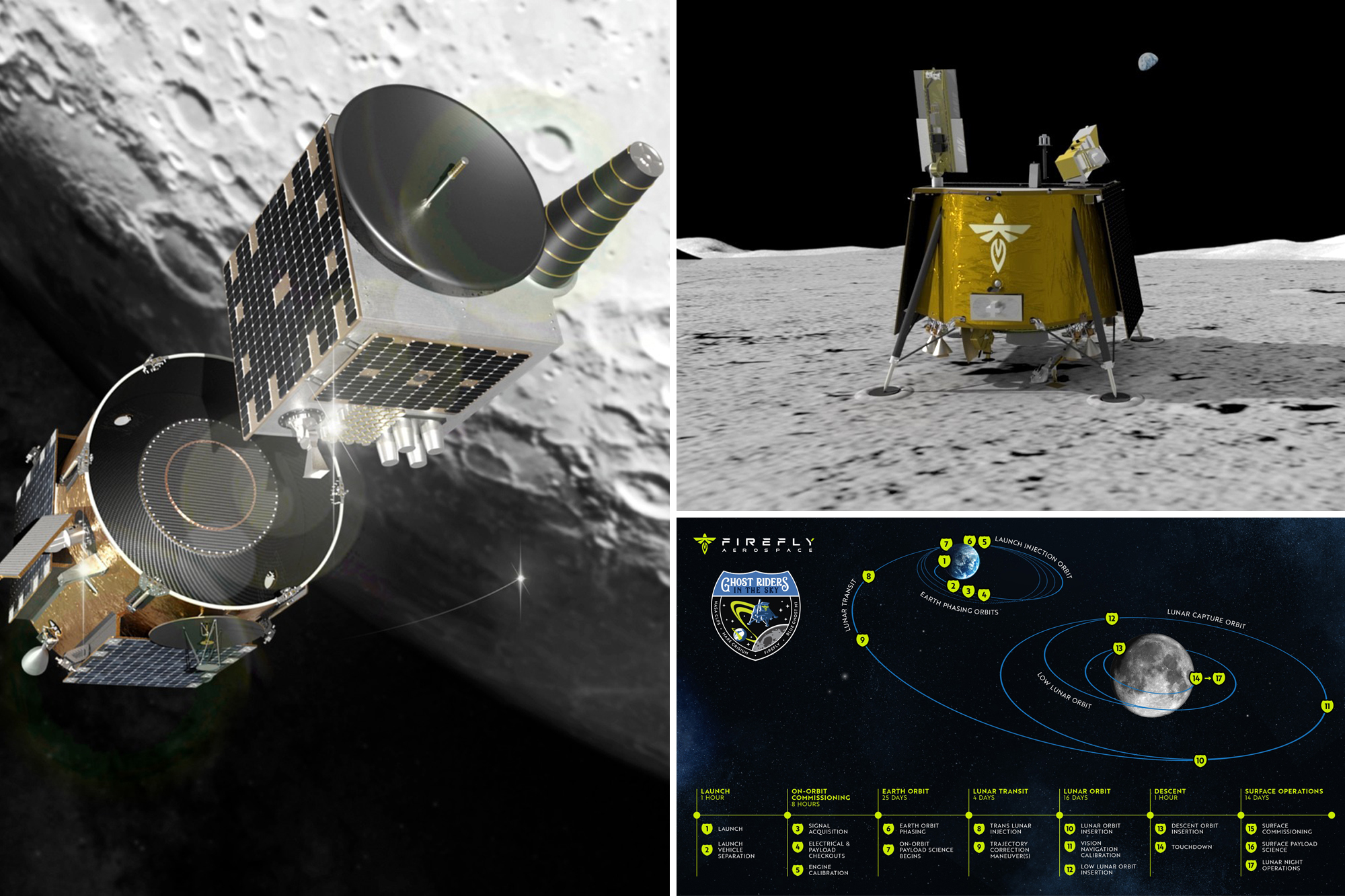Exploring Space Weather with the Blue Ghost Lunar Lander: A NASA Science Mission

Hey there, fellow space enthusiasts! Today, I’m thrilled to dive into an exciting topic that’s quite literally out of this world. We’re talking about the Blue Ghost lunar lander—a remarkable mission that’s set to make waves in how we understand space weather using cutting-edge NASA science. If you’ve ever looked up at the night sky and wondered what lies beyond, this mission is definitely one to watch.
As someone who has always been fascinated by the cosmos, I find missions like these incredibly inspiring. They remind us of the vast possibilities that lie in space exploration and how much we have yet to learn. So, buckle up as we embark on this journey together to uncover what the Blue Ghost lunar lander aims to achieve and how it could shape our understanding of space weather.
This mission is not just about scientific discovery; it’s about pushing the boundaries of human knowledge and preparing for future lunar explorations. Whether you’re a seasoned space geek or just curious about the universe, there’s something here for everyone. Let’s explore what makes this mission a pivotal moment in space exploration history.
Key Takeaways
- The Blue Ghost lunar lander is part of NASA’s Commercial Lunar Payload Services (CLPS) program.
- The mission focuses on studying lunar dust, geophysical characteristics, and space weather interactions.
- This mission paves the way for future human landings on the Moon, slated for 2027.
Understanding the Blue Ghost Mission
NASA is gearing up to send crucial scientific equipment to the Moon’s surface through its next commercial mission aboard Firefly Aerospace’s lunar lander. This initiative is part of NASA’s broader Commercial Lunar Payload Services (CLPS) program, which collaborates with private companies to ferry scientific gear and experiments to our celestial neighbor. The ultimate goal? To lay the groundwork for humanity’s return to the Moon by 2027.
Firefly Aerospace, based just outside Austin, Texas, is among the select companies working with NASA under this program. Their first CLPS mission, aptly named “Ghost Riders in the Sky,” marks a significant step forward in lunar exploration. Recently transported to Florida’s Kennedy Space Center, the Blue Ghost lander eagerly awaits its launch aboard a SpaceX rocket, with a potential departure window opening mid-January.

The Science Behind the Mission
Unlike previous CLPS missions that included commercial payloads, Firefly’s Blue Ghost will solely carry NASA’s instruments—ten in total—designed to gather invaluable data about the Moon and beyond. The chosen landing site near Mons Latreille within Mare Crisium holds historical significance, having hosted several Soviet-era missions in the 1970s.
This specific location was selected for its scientific potential and relative safety. It avoids large magnetic anomalies that could interfere with measurements and features a landscape conducive to safe landing operations. The volcanic terrain will also serve as an excellent reference point for navigational systems on board.

Exploring Lunar Dust and Space Weather
A central focus of the Blue Ghost mission is understanding lunar dust—known as regolith—and its impact on equipment and future astronauts. These tiny particles are notorious for their clingy nature, posing challenges for both machinery and human explorers. The lander will investigate how different materials interact with lunar dust and explore ways electromagnetic fields might prevent dust clumping.
The mission also aims to study space weather interactions using X-ray imaging to analyze Earth’s magnetosphere from afar. This data has real-world applications back on Earth, aiding in weather forecasting and satellite communication protection.

Step-by-Step Journey of Blue Ghost
- Launch Preparation: The Blue Ghost lander begins its journey at Firefly Aerospace’s headquarters before making its way to Kennedy Space Center in Florida.
- Liftoff: A six-day launch window opens mid-January, during which SpaceX will propel Blue Ghost towards its lunar destination.
- Journey Through Space: After launching, the lander embarks on a 45-day journey across space towards the Moon.
- Lunar Landing: Targeting Mons Latreille within Mare Crisium, Blue Ghost attempts a precise landing on the Moon’s far side.
- Scientific Exploration: For 14 days post-landing, scientific payloads operate continuously to collect data on lunar dust and space weather phenomena.

Final Thoughts
The Blue Ghost lunar lander represents more than just a technological achievement; it’s a beacon of curiosity guiding us toward new horizons in space exploration. As it prepares to embark on this groundbreaking journey, we’re reminded of how far we’ve come in our quest for knowledge—and how much further we can go.
This mission not only enhances our understanding of lunar conditions but also sets the stage for human exploration in years ahead. With each step taken by Blue Ghost on its celestial path, we inch closer to unlocking mysteries held by our cosmic neighbor.
I hope you’re as excited as I am about following this incredible adventure unfold! Feel free to share your thoughts or questions below—let’s keep this conversation going!
